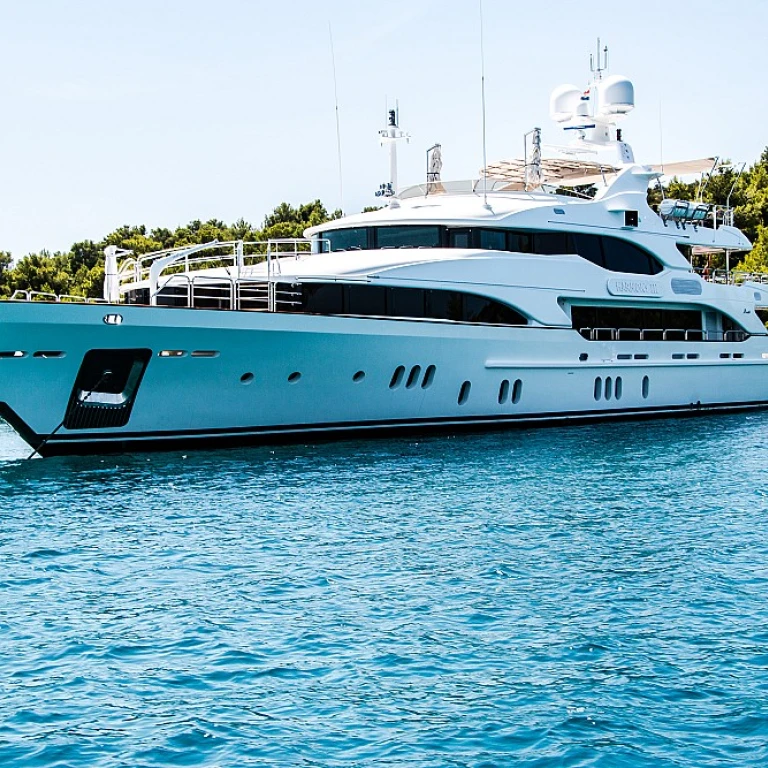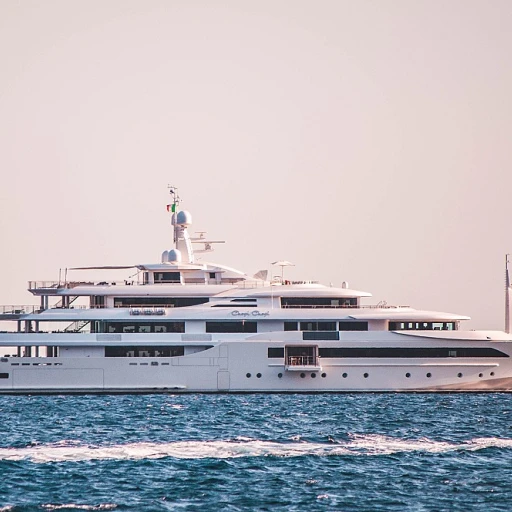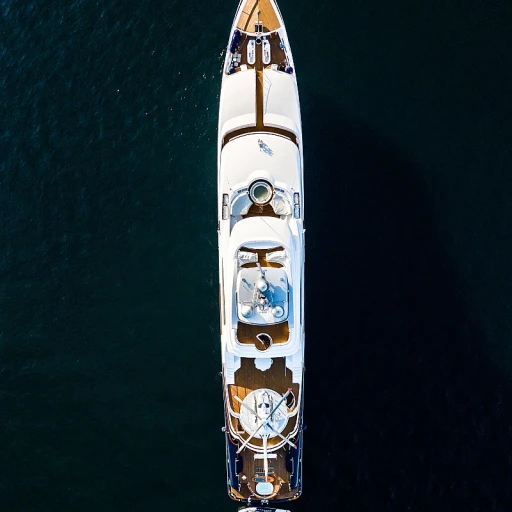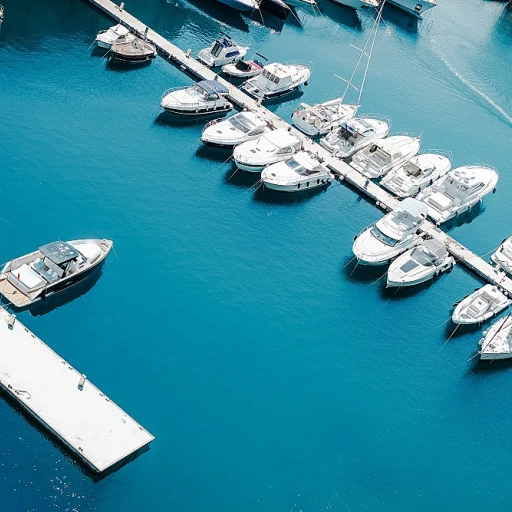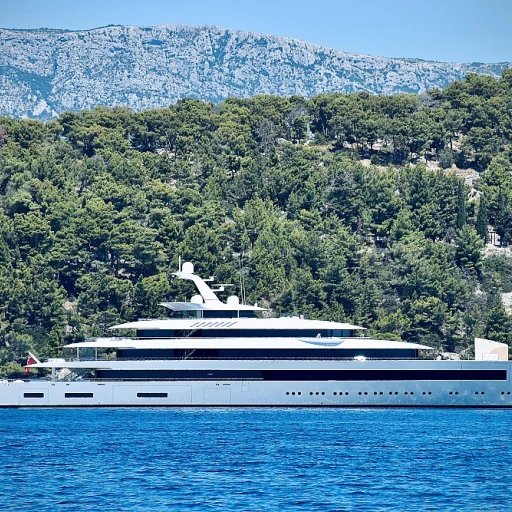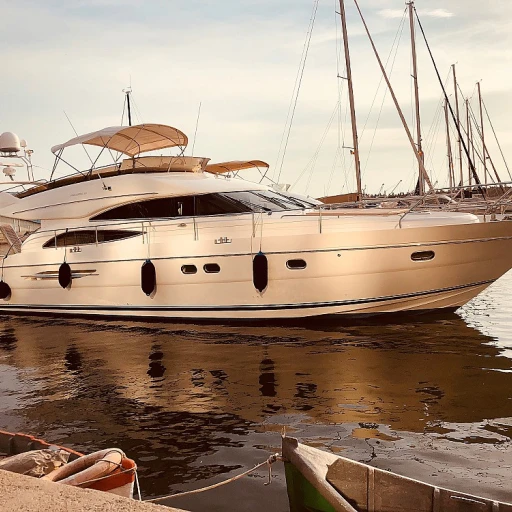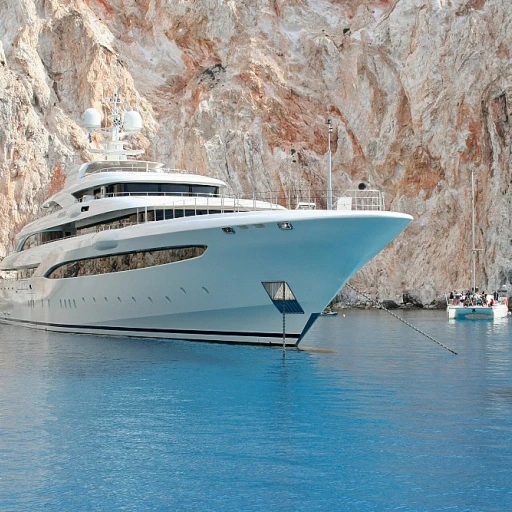Understanding the Role of Crew Boats in the Yacht Industry
Crew Boats: Vital Support Vessels in the Yachting Realm
The yacht industry is renowned for its opulence and the impressive array of vessels cruising the world's waters. Within this maritime tapestry, crew boats play a crucial role, acting as integral support vessels that ensure smooth operations and enhance the overall yachting experience. These boats, distinctively constructed and meticulously outfitted, offer specific features and capabilities that meet the industry's demanding standards, particularly in regions like the Gulf.
In essence, a crew boat, often seen as an unsung hero, acts as a bridge between luxury yachts and operational efficiency. With a primary function to transfer crew—be it to adjust staff rotations or bring on board specialists—the importance of these vessels is undeniable. The crew boats, predominantly constructed from aluminum for their lightweight yet durable nature, exhibit an array of specifications, such as length, deck capacity, and even their ability to carry deck cargo or additional passengers.
Equipped to handle a variety of conditions, these vessels range significantly in size and speed. Take into account the main engines, speed measured in knots, and light draft that are factors enabling these boats to swiftly and safely maneuver across different seas. Often seen with the flag USA and adhering to USCG certification standards, these boats ensure that safety and rigor are never compromised. Typically, their fuel capacity, measured in gallons, enables them to cover longer distances without the constant need for refueling, which is crucial for operations based far offshore or in remote areas.
The market offers diverse options, from different year-built models to varied price points. Understanding these elements is essential for making informed decisions, a process further detailed in subsequent sections. Key to successful ventures is knowing what types of crew boats align with specific needs, taking into consideration aspects like the draft or maximum speed. Whether exploring options or investing in these vessels, navigating this terrain is a nuanced task.
The aluminum crew boat industry, much like the broader yacht industry, evolves, buoyed by innovations and changing market demands. To fully appreciate the role of these boats, one might consider diving deeper into the sale aspects, touching upon various trends and expectations
navigating the world of luxury boating in Harrison Township, Michigan. This exploration hinges on a comprehensive understanding of both the operational necessities these vessels fulfill and their broader market implications.
Current Market Trends for Crew Boats
Current Dynamics and Demand in the Crew Boat Market
The yacht industry's landscape is an ever-shifting sea, and crew boats are an integral part of this vibrant ecosystem. These specialized vessels are essential for transporting crew members and supplies, ensuring smooth operations across various locations. With the USA and the Gulf region as prime locations, potential buyers have diverse options to explore.
The market trends for crew boats have revealed notable insights. As vessels continue to serve resource-rich areas, aluminum-built crew boats are recommended due to their favorable price points and durability. These boats offer flexibility, especially with USCG-certification guaranteeing safety and reliability, thereby increasing demand.
With their length and deck capacity, some boats can accommodate up to 100 passengers. While their primary function is transporting crew, these boats' design often mandates light draft capability, which aids in navigating shallow waters. The type of hull and aluminum material contributes to better speed; crew boats in certain areas, for instance, can reach max speed knots varying between 20 to 30.
However, price varies with specifications, especially as more complex vessels showcase elements like additional deck space for cargo and higher capacity gallons for fuel storage. Engines also play a part, with main engines designed to enhance speed and efficiency.
As these aluminum crew boats fulfill their purpose, it’s paramount to consider factors such as location, which can influence operational parameters. Buyers should prioritize understanding the USA flag requirements, draft needs, and type preferences, ensuring the vessel aligns with the intended use.
To delve deeper into yacht opportunities and surrounding dynamics, consider
exploring yacht rental opportunities on Lake Travis, where similar elements of demand and supply shape the market narrative.
Keeping a keen view on these evolving trends ensures a well-informed purchase decision, as crew boats remain indispensable in providing logistical support within the yacht industry.
Key Features to Consider When Purchasing Crew Boats
Essential Considerations When Selecting a Crew Boat
When embarking on the search for the ideal crew boat, myriad factors come into play. The selection process should begin with a diligent assessment of critical features that align with both operational needs and budgetary constraints.
Foremost is the
vessel size and type. Buyers must evaluate whether a type aluminum or other construction material suits their purpose, as well as the boat’s overall length and deck space. An aluminum crew boat, with its light draft and durability, often appeals to operators looking for longevity and efficiency.
Attention to the boat’s
capacity extends beyond just
passenger numbers. The vessel’s ability to carry adequate deck cargo and its fuel capacity gallons are crucial, particularly for operations within the expansive location gulf or similar territories.
For those prioritizing speed, examining the main engines and identifying max speed capabilities is pivotal. Boats with a speed exceeding certain knots can drastically impact operational schedules. It's also beneficial to note that modern crew boats can offer impressive speed knots without compromising passenger comfort.
An understanding of the
boat’s age and condition is paramount as well. Analyzing the
year built conveys not only performance expectations but also necessary maintenance schedules. Older vessels might come at a reduced price, but they often require more frequent upkeep.
Additionally, don’t overlook
regulatory requirements. Ensuring the vessel is USCG certified for safety is non-negotiable. The flag USA status also presents implications for legal operations and potential resale value.
For potential buyers, having a compatible investment view is vital. Comprehensive overview details, including price and options for specialized financing, can make a significant difference in closing a deal efficiently. This includes understanding the net worth needed for a luxury yacht prior to navigating the transaction.
Financial Considerations and Investment Insights
Financial Aspects to Factor Into Your Purchase
Purchasing a crew boat is a significant investment, requiring a thorough understanding of various financial aspects. It's important to evaluate the price range based on the boat's type, year built, and its overall condition.
- Price and Financing: Prices can vary widely depending on factors like length, deck space, speed capabilities, and the vessel's year built. It's advisable to compare prices across different boats with similar attributes. Many buyers consider financing options to manage the upfront cost effectively, especially if the boat's price tag is on the higher end.
- Insurance and Maintenance: Beyond the initial purchase price, insurance and ongoing maintenance are critical financial considerations. Insurance premiums will depend on the crew boat's type, length, capacity, flag (such as the flag USA), and operational region. Additionally, regular maintenance, especially for aluminum crew boats, ensures the vessel remains USCG certified and operating at max speed.
- Operational Costs: Accounting for operational costs is essential. These typically include fuel capacity gallons, main engines management, and dock fees, particularly if the boat's primary location is in high-demand ports like those in the Gulf.
- Depreciation and Resale Value: It's wise to consider resale value and vessel depreciation over time. Crew boats with light draft, optimal deck cargo capacity, and efficient fuel usage generally hold value longer. Remember, larger boats or those offering high speed knots capability with ample passenger capacity might depreciate differently compared to smaller, less robust models.
Understanding these financial considerations can guide a wise investment in crew boats, allowing you to align your purchase with your strategic and budgetary objectives.
Navigating the Buying Process
Understanding the Buying Journey for Crew Boats
Navigating the process of purchasing a crew boat requires an informed approach, considering the investment's magnitude and the vessel's role in the yacht industry. To simplify this, let's break it down into several essential components:
-
Outline Your Needs: Consider the type of crew boat that suits your specific requirements. Whether it's an aluminum crew vessel or one designed for a specific flag, like flag USA, each choice impacts factors like deck space, passenger capacity, and main engines. Additionally, consider the required speed—whether it’s max speed or typical speed knots, and the draft specifications appropriate for your intended waterways, especially if you're operating in locations such as the Gulf.
-
Research Features and Compliance: Delve into details like the year built, capacity for passengers and deck cargo, and whether the boat is USCG certified. Aspects such as aluminum construction, light draft, and fuel capacity (often measured in capacity gallons) play critical roles in operational efficiency and safety.
-
Budget Considerations: Understanding the price range and financial ramifications is crucial. A detailed view of the price will inform your budgetary planning and enable a clear comparison among several boats, helping avoid overspending.
-
Seek Professional Guidance: Engage with experts who have intimate knowledge of the yacht industry. They can offer insights into vessel types and provide assistance in reviewing detailed aspects like size type and knots passengers fit.
-
Evaluate Market Opportunities: Stay informed about current market trends for crew boats. Observing changes in supply, demand, and innovation within the boating industry can unveil unexpected opportunities or alternatively, highlight potential investment risks.
-
Conduct Thorough Inspections: Whether the boats are new or used, performing a comprehensive inspection ensures the vessel meets your operational standards and confirms that advertised features align with reality.
-
Negotiate and Finalize the Deal: With a clear understanding of the boat's valuation and your financial leeway, engage in negotiations. Aim for a deal that reflects the boat's worth while maintaining future investments.
The successful acquisition of crew boats lies in detailed planning and market savvy, ensuring one navigates the purchasing landscape effectively to achieve optimal outcomes.
Future Outlook for Crew Boats in the Yacht Industry
The Evolution and Future Trajectory of Crew Boats
The future of crew boats in the yacht industry is shaped by evolving maritime needs and technological advancements. With the ongoing innovation in boat design and engineering, the horizons for crew boats seem promising. Let's take a closer look at the factors influencing the future direction of these versatile vessels.
One emerging trend is the increased demand for eco-friendly designs. Crew boats are being built with energy-efficient main engines, employing alternative fuels and optimized hull designs that minimize environmental impact. This transition is driven by both regulatory pressures and the growing eco-conscious mindset among boat owners and operators.
Moreover, the materials used in construction are undergoing a significant shift. Aluminium, known for its durability and light weight, is increasingly favored for new builds. This reduces the vessel's light draft, enhancing speed and fuel efficiency. As a result, aluminum crew boats are becoming more dominant in the marketplace.
In terms of technological advancements, there is a strong emphasis on enhancing speed and maneuverability. With some vessels reaching maximum speeds close to 30 knots, operators can expect quicker and more efficient transfers of passengers and cargo. Furthermore, newer designs prioritize expanded deck space and increased capacity, allowing them to carry more deck cargo and passengers while maintaining stability.
Looking at financial considerations, the price points for these boats are expected to fluctuate based on the global economic landscape and raw material prices. However, investing in a crew boat can still be a sound financial decision, with many operators seeing returns through efficient operations and lower maintenance costs.
Navigating the buying process may also evolve with more digital integration, allowing potential buyers to view details and make selections via interactive platforms. This streamlining can significantly reduce the time between initial inquiry and final purchase.
Overall, crew boats are set to play a crucial role in the yacht industry, adapted for modern demands and equipped to meet future challenges. Their evolution is inevitable, driven by market forces and technological progress, ensuring they remain reliable, efficient, and environmentally conscious vessels for years to come.

